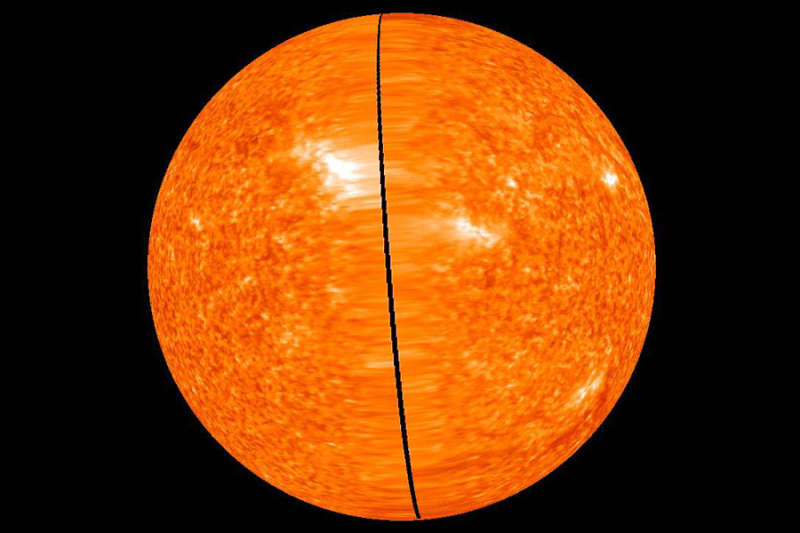Credit & Copyright: STEREO Project,
NASA
Explanation:
For the first time, the entire Sun is being imaged all at once.
This has become possible because the two
STEREO satellites orbiting and
monitoring the Sun are now on opposite sides of the Sun.
The two satellites have been
drifting apart,
as expected, since their
launch in 2006, since one
satellite orbits slightly closer to the Sun than the other.
The above image shows nearly the entire Sun as it appeared one day last week, a
few days before maximum exposure.
Yesterday, the dark gap in the center closed completely, and
STEREO was able to beam back to Earth full 360 degree images of the
closest star.
Full solar images are useful scientifically for a number of reasons, including catching
rapidly evolving
flares,
coronal mass ejections,
tsunamis, and
filaments, no matter where they occur on the Sun,
as well as monitoring days-long
sunspots and
active regions without losing them as they rotate out
of view.
Even though the
STEREO satellites
will continue to drift apart at about 44 degrees per year,
Sun-staring
instruments on or near the Earth will augment them to provide a full
view of the Sun for the next several years.
Students (young and old):
See free lectures on astronomy
1999 2000 2001 2002 2003 2004 2005 2006 2007 2008 2009 2010 2011 2012 2013 2014 2015 2016 2017 2018 2019 2020 2021 2022 2023 2024 2025 |
Yanvar' Fevral' Mart Aprel' Mai Iyun' Iyul' Avgust Sentyabr' Oktyabr' Noyabr' Dekabr' |
NASA Web Site Statements, Warnings, and Disclaimers
NASA Official: Jay Norris. Specific rights apply.
A service of: LHEA at NASA / GSFC
& Michigan Tech. U.
|
Publikacii s klyuchevymi slovami:
stereo - Sun - Solnce - stereo izobrazhenie - satellite - sputnik
Publikacii so slovami: stereo - Sun - Solnce - stereo izobrazhenie - satellite - sputnik | |
Sm. takzhe:
Vse publikacii na tu zhe temu >> | |
